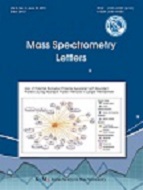
- P-ISSN 2233-4203
- E-ISSN 2093-8950

This article reviews recent analytical techniques using inductively coupled plasma-mass spectrometry (ICP-MS) immunoassay for clinical and bio analysis. We classified the techniques into two categories, direct and indirect analysis, which depend upon a guideline of whether tagging materials are used or not. Direct analysis is well known, and generally used in con-junction with various other techniques, such as laser ablation, chromatographic separations, etc. Recently, indirect analysis using tagging elements has intensively been discussed because of its importance in future applications to bio and clinical analysis, including environmental and food industries. The method has shown advantages of multiplex detection, excellent sensitivity, and short analysis time owing to signal amplification and magnetic separation. Now, it expands the application field from small bio-molecules to large cells.
Pröfrock, D.. (2012). . Appl. Spectrosc, 66, 843-.
Meng, W.. (2007). . Talanta, 71, 2034-.
Batista, B. L.. (2011). . Food Chem, 126, 2000-.
Xiao, Q.. (2007). . J. Am. Soc. Mass. Spectrom, 18, 1740-.
Zhang, Z.. (2011). . Metallomics, 3, 816-.
Persson, D. P.. (2009). . Metallomics, 1, 418-.
Bianconi, E.. (2013). . Ann. Hum. Biol, 40, 463-.
Suresh, S.. (2007). . Acta Mater, 55, 3989-.
Zhuo, Y.. (2010). . Analyst, 135, 2036-.
Haraguchi, H.. (2004). . J. Anal. Atom. Spectrom, 19, 5-.
Liu, H.. (2008). . Anal. Chem, 80, 5654-.
Wei, W.. (2011). . Anal. Bioanal. Chem, 401, 3269-.
Wilson, M. S.. (2006). . Anal. Chem, 78, 6476-.
Haraguchi, H.. (2004). . J. Anal. Atom. Spectrom, 19, 5-.
Hanas, J. S.. (1983). . J. Biol. Chem, 258, 14120-.
Berg, J.. (1990). . J. Biol. Chem, 265, 6513-.
Roohani, N.. (2013). . J. Res. Med. Sci, 18, 144-.
Becker, J. S.. (2010). . Mass Spectrom. Rev, 29, 156-.
Joo, J. Y.. (2012). . J. Anal. Atom. Spectrom, 17, 1069-.
Parsons, P. J.. (2007). . Spectrochim. Acta. Part B, 62, 992-.
Becker, J. S.. (2014). . Anal. Chim. Acta, 835, 1-.
Wu, B.. (2012). . Metallomics, 4, 403-.
Sanz-Medel, A.. (2008). . Anal. Bioanal. Chem, , 390-.
Becker, J. S.. (2007). . Anal. Atom. Spectrom, 22, 736-.
Becker, J. S.. (2013). . J. Mass Spectrom, 48, 255-.
Jakubowski, N.. (2008). . J. Anal. Atom. Spectrom, 23, 1497-.
Schwarz, G.. (2014). . J. Anal. Atom. Spectrom, 29, 221-.
Sanz-Medel, A.. (2012). . Trends Anal. Chem, 40, 52-.
Malati, T.. (2007). . Indian J. Clin. Biochem, 22, 17-.
Sturgeon, C. M.. (2008). . Clin Chem, 54, 11-.
Park, Y.. (1999). . Int. J. Cancer, 130, 1136-1144.
Zhang, S. C.. (2004). . Clin. Chem, 50, 1214-.
Hu, S.. (2007). . Anal. Chem, 79, 923-.
Terenghi, M.. (2009). . Anal. Chem, 81, 9440-.
Liu, R.. (2010). . Talanta, 83, 48-.
Lu, Y.. (2009). . Talanta, 78, 869-.
Liu, J. -M.. (2010). . J. Proteome Res, 9, 3545-.
Jang, J. H.. (2010). . Microchem. J, 94, 148-.
Peng, H.. (2011). . J. Anal. Atom. Spectrom, 26, 1217-.
Fu, Z.. (2007). . Anal. Chem, 79, 7376-.
Wu, J.. (2007). . Clin. Chem, 53, 1495-.
Suwansaard, S.. (2009). . Biosens. Bioelectron, 24, 3436-.
Ko, J. A.. (2013). . J. Anal. Atom. Spectrom, 28, 630-.
Ko, J.. (2014). . Anal. Chem, 86, 4140-.
Zhao, Q.. (2009). . Anal. Chem., 81, 7484-.